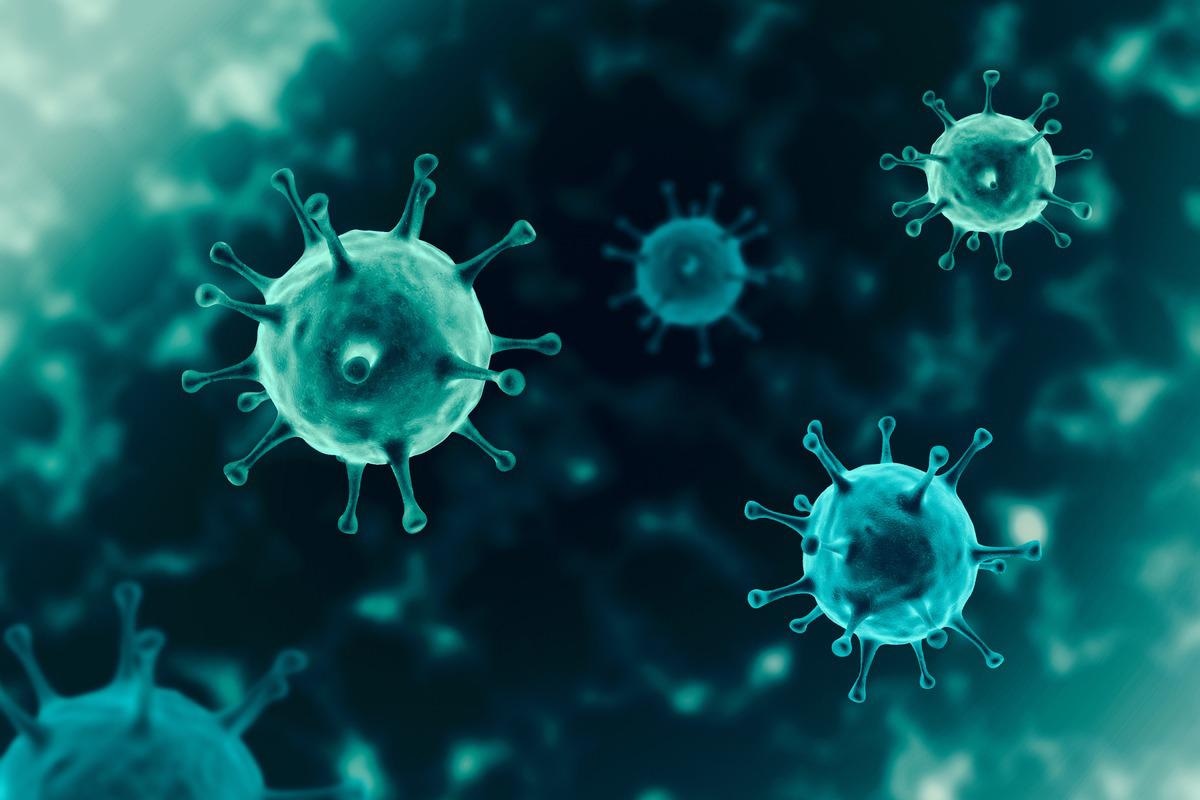The severe acute respiratory syndrome coronavirus 2 (SARS-CoV-2) is a positive-sense, single-stranded (ss) RNA virus. Upon binding to the angiotensin-converting enzyme 2 (ACE2) receptor, the virus enters the host cell by copying its genome and circulating in the host’s bloodstream. It does so by generating the full-length negative-sense genomic RNA (gRNA) to synthesize positive-sense gRNA.
The positive-sense gRNA itself undergoes discontinuous synthesis of negative-sense subgenomic RNAs, which in turn transcribe positive-sense subgenomic messenger RNAs (sgmRNAs) for production of viral structural proteins.
 Study: The SARS-CoV-2 nucleocapsid protein preferentially binds long and structured RNAs. Image Credit: Nhemz/Shutterstock
Study: The SARS-CoV-2 nucleocapsid protein preferentially binds long and structured RNAs. Image Credit: Nhemz/Shutterstock
Discontinuous synthesis of subgenomic RNAs is mediated by a transcription regulatory sequence (TRS) that facilitates the fusion of the 5’-leader to each gene. For instance, the nucleocapsid protein (NCAP) sgmRNA (NsgmRNA) encodes the nucleocapsid protein and contains the 5’ leader sequence and poly(A) tail common to all sgmRNAs. NsgmRNA is the most abundant sgmRNAs in the SARS-CoV-2 transcriptome.

 *Important notice: bioRxiv publishes preliminary scientific reports that are not peer-reviewed and, therefore, should not be regarded as conclusive, guide clinical practice/health-related behavior, or treated as established information.
*Important notice: bioRxiv publishes preliminary scientific reports that are not peer-reviewed and, therefore, should not be regarded as conclusive, guide clinical practice/health-related behavior, or treated as established information.
The SARS-CoV-2 NCAP performs crucial roles in viral RNA genome packaging, virion assembly, RNA synthesis and translation, and regulation of host immune response. RNA-binding is central to these processes. However, the targets for NCAP binding (host and viral RNAs) resulting in production of viral progenies remains a mystery. Researchers have tried to answer this fundamental issue with a study published in the preprint server bioRxiv*.
Study details
NCAP is roughly divided into three major regions from previous studies: an RNA-binding domain (RBD), a low complexity domain (LCD, an intrinsically disordered linker), and a dimerization domain (DD). The RBD and DD have additional intrinsically disordered regions (IDRs) called the N-terminal tail (NTT) and C-terminal tail (CTT), respectively.
Three-dimensional structures of both the RBD and DD have revealed an extensive dimerization interface, suggesting that NCAP forms a strong dimer. The CTT can help NCAP in assembling into a tetramer and higher oligomers. Both RBD and DD have been shown to bind RNA. Upon binding RNA and assembling into the virion, NCAP forms higher-order structures as revealed by cryo-electron tomography studies. These proteins are responsible for the spread of the virus in the bloodstream and increasing viral load.
Researchers used electrophoresis mobility shift assay (EMSA) and competition assays to compare NCAP binding to different RNAs, be it in SARS-CoV-2 vs. non-SARS-CoV-2, long vs. short, and structured vs. unstructured.
These RNAs included both ss sites with and without flanking hairpins (stem loops), with a focus on the most prominent NCAP-crosslinking Site 2 (S2) and the flanking stem loops 4 and 5 (SL4, SL5). The latter RNA, known as the S2hp (Site 2 with flanking hairpins), was also deemed worthy of research as it housed the translation start site of ORF1a and two upstream open reading frames (uORFs) that could be functionally important.
The researchers found that although NCAP was capable of binding all RNAs tested, it primarily bound to structured RNAs, and their association suppressed strong interaction with single-stranded RNAs.
NCAP was seen to prefer long RNAs, especially those containing multiple structures, like the SL5 four-way junction, over the shorter ones such as the SL4 hairpin, and over certain non-specific RNAs like tRNAs and P4-P6. It was also seen that NCAP preferred structures separated by single-stranded linkers offering conformational flexibility. Additionally, all three major regions of NCAP had an affinity for binding to RNA, including the LCD and DD that promote formation of NCAP oligomers, amyloid fibrils and liquid-liquid phase separation.
Implications
This study showed that NCAP was primarily bound to structured and longer RNAs. Researchers thus proposed that NCAP-NCAP interactions mediated the production of higher-order structures (oligomers) during the packaging of viral materials. This also drove recognition of the genomic RNA and facilitated the formation of viral proteins that later spread in the host system. Researchers called this mechanism recognition-by-packaging.
The results from this study would be crucial in studying the molecular and biochemical basis of SARS-CoV-2 infection at a more granular level and help in strategizing therapeutic solutions to treat and manage COVID-19 effectively.

 *Important notice: bioRxiv publishes preliminary scientific reports that are not peer-reviewed and, therefore, should not be regarded as conclusive, guide clinical practice/health-related behavior, or treated as established information.
*Important notice: bioRxiv publishes preliminary scientific reports that are not peer-reviewed and, therefore, should not be regarded as conclusive, guide clinical practice/health-related behavior, or treated as established information.